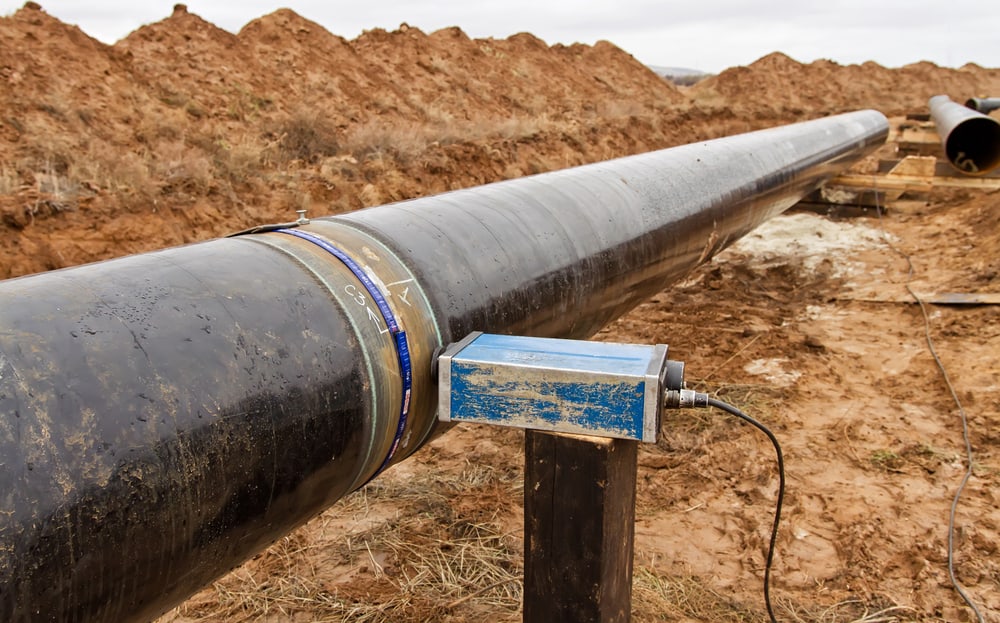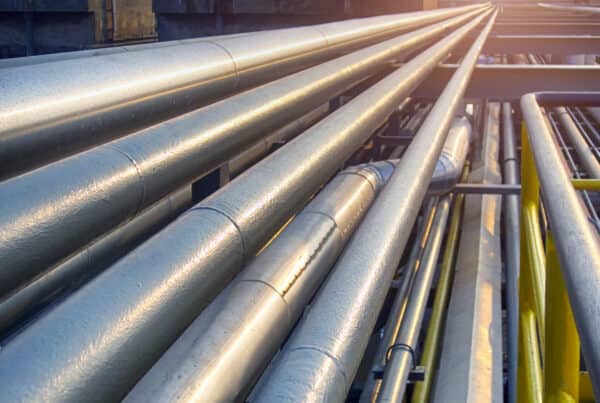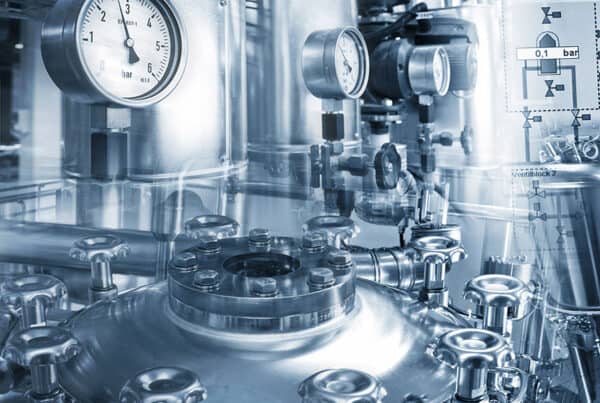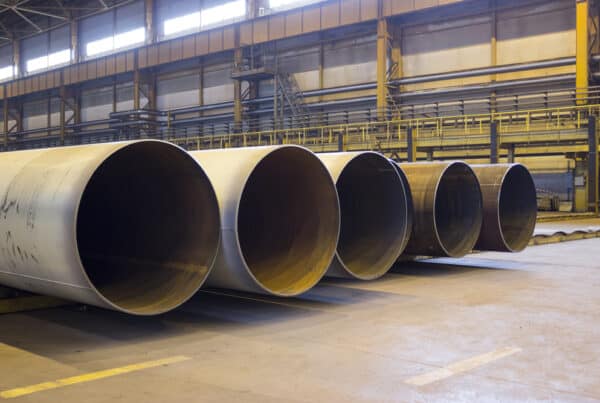
Ask a pipe welder what the best welding machine for a pipeline is, and they are likely to mention a particular shielded metal arc welding (SMAW) machine first produced in 1945, when welders still cross-trained as blacksmiths. This machine is a classic that stayed in production until the 1990s, and examples can still be found on job sites today. However, SMAW, or stick welding, is not the best type of welding for pipeline work. It has been superseded by other welding processes, and gas tungsten arc welding (GTAW)—also called tungsten inert gas (TIG) welding—offers cleaner, more precise welds that are stronger and more reliable over the long-term than SMAW welds. So why isn’t TIG the standard for building pipelines?
Why GTAW/TIG Is Not the Preferred Method on Pipelines
The high internal pressures in petrochemical pipelines and the serious potential economic and environmental consequences of a weld failure would seem to require the quality and consistency offered by TIG welds. Yet, manual TIG welding has traditionally been difficult to use on heavy-duty projects involving thick-wall pipe in remote locations.
When pipeline project managers consider manual TIG welding, the following drawbacks likely come to mind:
- Environmental conditions disrupting the weld: Field work environments are prone to storms, precipitation, low temperatures, and high winds. TIG welds can be compromised by environment conditions, including winds blowing the shielding gas away.
- Longer setup time to reduce disruption: TIG welding may require the erection of wind barriers to block wind or temporary roofing to keep rain off the equipment. This effort takes time that may cut into the period scheduled for welding.
- Fine, clean beads take significant time to fill joints: The most noticeable characteristic of a TIG weld is how neat, precise, and narrow the weld bead is. Also, TIG welding has a lower deposition rate then other weld processes. Manually filling the weld groove flush on the type of thick-walled, large-diameter piping typically found on pipelines requires considerable additional time when compared to other processes.
- Time to finish a welding pass: TIG welding of steel or stainless steel is one of the most time-consuming welding processes. Not only are the individual weld beads small, but completing a single pass also takes a significant amount of time.
On top of the time needed to complete a weld, manual TIG welding is a difficult process to master. As a result, a chronic shortage of qualified TIG welders is the norm in many industries. Though the time involved in manual TIG welding and the shortage of experienced welders have kept this process from being used more widely, there are compelling reasons to bring its quality, precision, and reliability to pipeline projects.
Increasingly stringent engineering requirements and regulatory pressures can only be met by the wider use of the TIG process. The solution is orbital welding, which automates the GTA welding process to allow joints to be welded faster, with less training and experience. Orbital welding has a lower rejection rate for completed welds reviewed with non-destructive testing (NDT) methods than traditional pipe welding, and can provide a solution for pipeline projects in need of precise, high-quality welds.
How Automated Orbital Welding Provides Reliable TIG Welding for All Industries
Orbital welding was developed as a way to address the difficulties of training welders on manual GTAW and of regulating the speed, angle, and travel issues that can arise during TIG welding.
Orbital welding automates travel speed, electrode angle, gas flow, arc length, filler input, and other aspects of the welding process according to settings entered into the control unit. This gives orbital welding the following advantages over manual TIG welding:
- Accessibility: Orbital welding needs only enough space around the pipe for the weld head to be mounted. This is considerably less than what is needed for a manual welder to maneuver their whole body, and allows pipes in obstructed areas to be welded without disassembly or the removal of surrounding objects.
- Speed/Productivity: Using an orbital welding system, a welder can complete a single pass on a pipe joint without stopping. A manual TIG welder, on the other hand, typically breaks the circumference of the pipe into sections, with setup and prep time required for each section. Also, automated orbital pipe welding weld head has a higher and more consistent deposition rate than manual TIG welding. As a result, a trained orbital welder can easily outperform a manual TIG welder.
- Consistency: The travel speed, electrode angle, gas coverage, and movement pattern of a manual welder are subject to inconsistencies due to the welder’s skill level, positioning, access to the weld joint, and level of fatigue. The automation of the orbital welding process results in a weldment of uniform consistency with less chance of contamination or occlusions that might weaken the weld.
- Control: Many orbital welding setups can be used in conjunction with data acquisition systems so the operator can monitor—and even record—the weld in order to ensure that the joint is being welded to specification at all times. This stands in sharp contrast to manual TIG welding, in which the welder can only monitor puddle shape and weld formation, and would not notice the loss of shielding gas or contamination until after the weld was completed.
The combination of speed, predictability in the welding process, and the reliability of the final weld make orbital GTAW the best welding for pipeline work. So why is it so rare in outdoor field applications like petrochemical pipeline installations?
Until recently, orbital welding equipment wasn’t portable. Advances in computers, automation, and the miniaturization of some heavy-duty electronics have changed this, and today orbital welding setups can be used much more easily in field applications.
The Best Welding Machine for Pipeline Applications
The best welding machine for your pipeline application depends on the diameter of the pipe being welded, as well as your unique work environment. The following types of weld head can be adapted to suit almost any pipeline project:
- Low-profile, small-diameter weld heads work with pipe diameters from around two inches in diameter to more than five inches in diameter, with less than two inches of clearance needed around the pipe for mounting the weld head.
- Full-function weld heads can accommodate an even wider variety of pipe diameters (from three-eighths of an inch up) and are compatible with a wide variety of metals, from common carbon and stainless steels to common non-ferrous metals like aluminum, and even exotic alloys like Hastelloy®, Inconel®, and Monel®.
- Heavy-duty track-mounted weld heads can handle pipe of any diameter larger than three inches. With cross-seam steering of up to 12 inches, high-quality heavy-duty weld heads can handle very wide passes.
Any welder knows that a welding head is only part of what is needed for TIG welding. A pipe welding setup also requires a programmable power supply. A portable power supply is the perfect choice for field applications such as pipeline welding. With the availability of precise, reliable, and compact orbital welding setups, the possibilities of orbital arc welding for pipeline applications are increasingly being recognized.
For critical applications and for those applications where it is not possible to see the weld as it completely orbits the weld joint, digital weld cameras offering high resolution, real-time color video of the weld being performed can be included with most weld heads. Typically, the weld heads can be provided with cameras that provide a leading edge and trailing edge view of the weld.
The Future of Pipeline Welding
The future of the petrochemical industry and other industries that rely on pipelines requires greater efficiency enabled by higher pressure capacities and the delivery of purer, cleaner products. This requires precise, high-quality TIG weldments produced by fast, consistent, and reliable orbital TIG welding machines. Petrochemical companies and contractors building petrochemical reservoirs, pumping stations, or refineries should turn to the best welding machines for pipeline applications. Arc Machines, Inc. is known for its history of innovation and quality equipment, and stands by its products by offering training in orbital welding as well as service and maintenance programs.
Arc Machines. Inc. offers a variety of orbital welding equipment designed to help your pipeline project run smoothly and efficiently. For inquiries regarding products, contact sales@arcmachines.com. For service inquiries contact service@arcmachines.com. Arc Machines welcomes the opportunity to discuss your specific needs. Contact us to arrange a meeting.




